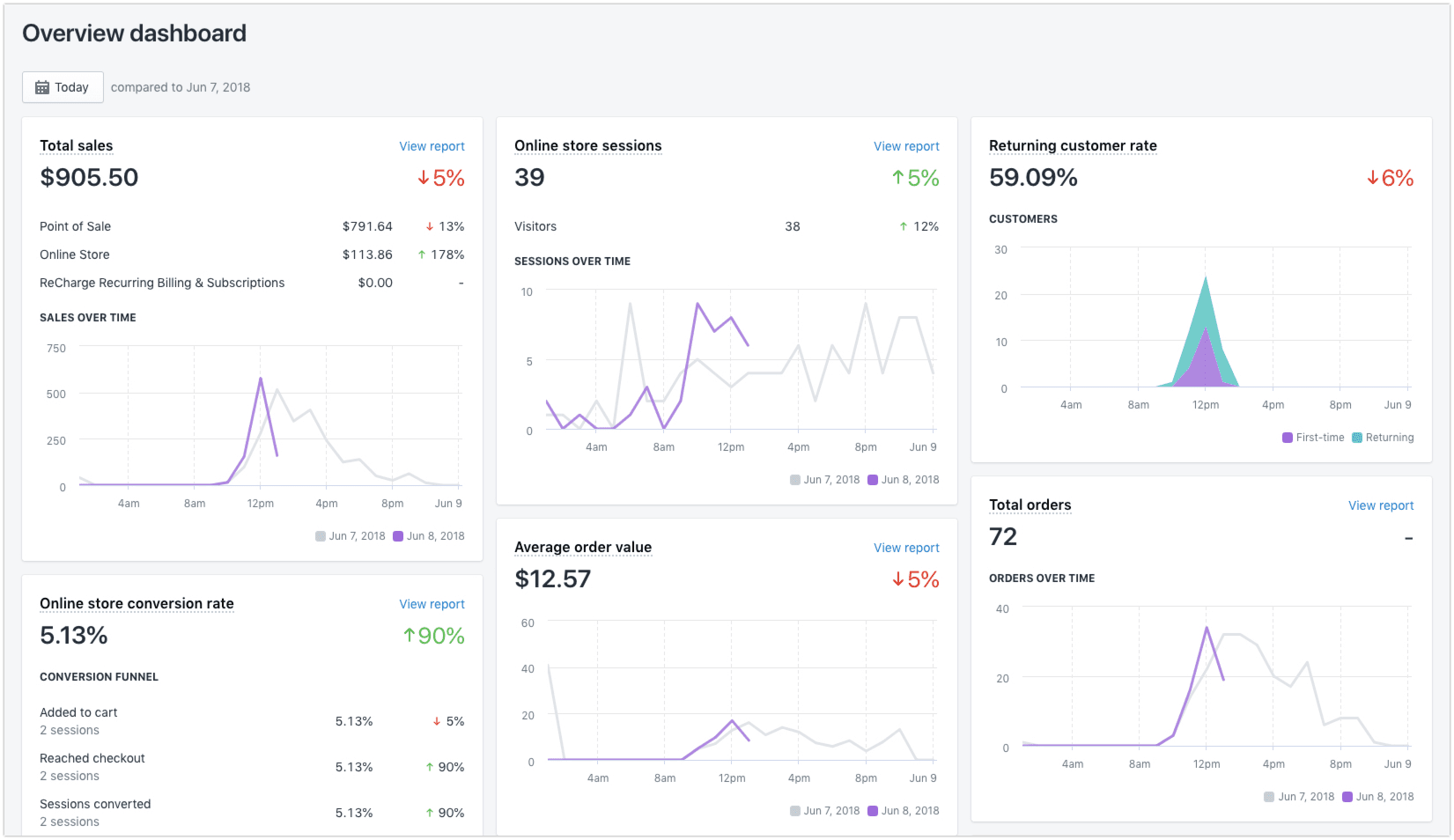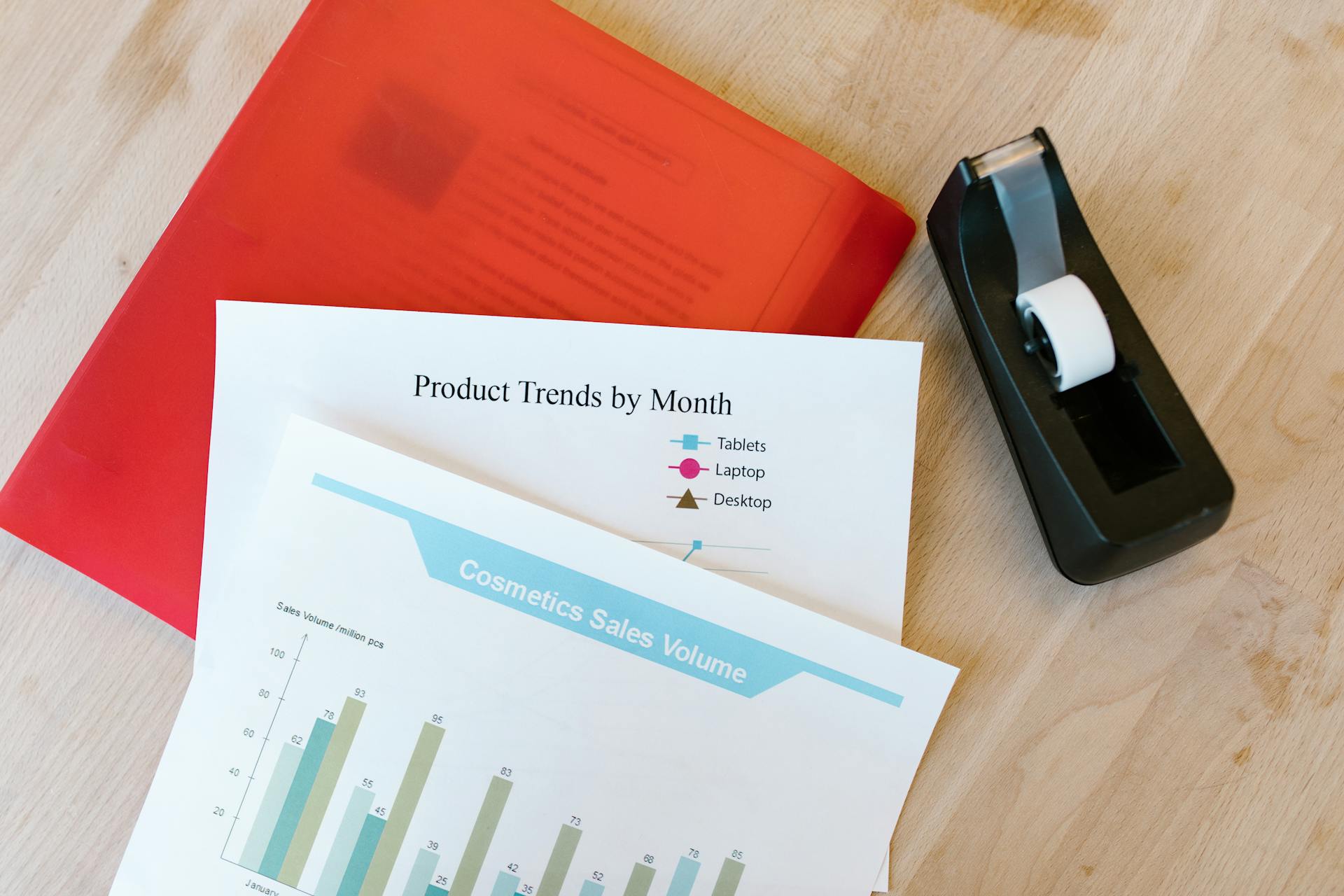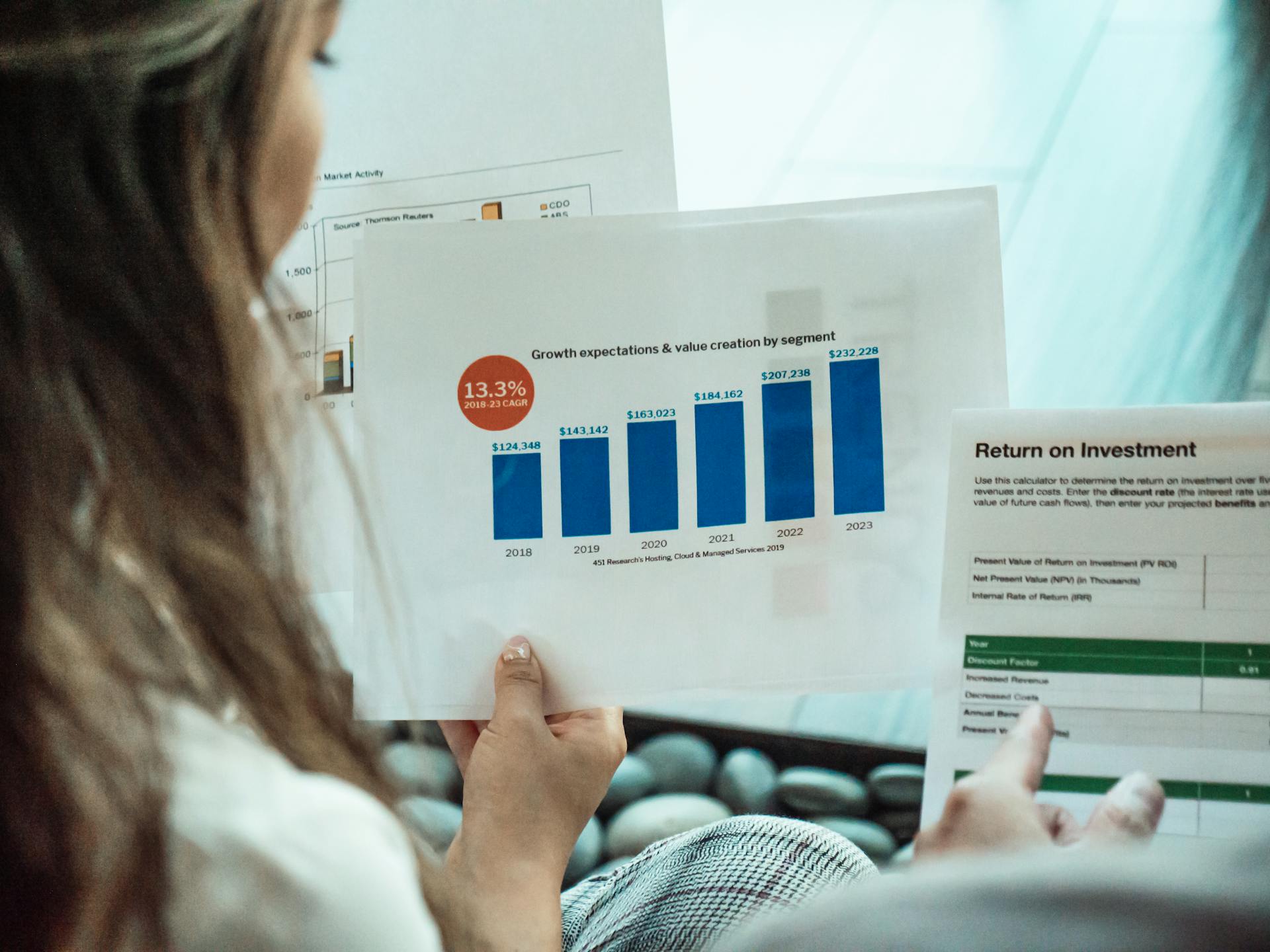Unlock your ecommerce store’s full potential with Shopify Analytics. Learn how to track performance, understand customer behavior, and grow using real-time insights..
Key Takeaways
→ Shopify Analytics empowers data-driven growth by tracking sales, traffic, and customer behavior — giving merchants clear, actionable insights.
→ Combining Shopify Analytics with Google Analytics 4 provides a full picture; from ecommerce performance to traffic source attribution and audience segmentation.
→ Focusing on key metrics like conversion rate, average order value, and retention helps merchants optimize decisions, scale operations, and stay competitive.
Core Concepts of Shopify Analytics
Shopify Analytics works like your store’s fitness tracker – constantly monitoring vital signs and performance across your entire business.

Shopify Analytics – Core Concepts
Here’s what it actually does behind the scenes:
- Tracks every visitor journey – from where they came from to where they clicked
- Monitors product performance – showing you what’s selling, what’s not, and why
- Measures marketing effectiveness – revealing which channels deliver real sales
- Analyzes customer behavior – spotting patterns in how people shop your store
- Provides financial insights – breaking down your revenue, costs, and profits
I remember when I launched a new summer collection and was shocked that my beautiful hero product wasn’t selling. My dashboard revealed that while people were viewing the product page (high traffic), they weren’t adding to cart (poor conversion). A quick video session showed the “Add to Cart” button was practically invisible on mobile devices! Five minutes of CSS tweaking later, and sales started flowing.
That’s the power of letting data guide your decisions instead of assumptions.
How to use Shopify Analytics effectively
The secret to Shopify analytics isn’t just having the data – it’s knowing what to do with it. Here’s my practical approach that’s worked for hundreds of store owners:
- Start with questions, not reports – What problem are you trying to solve? “Why did sales drop last week?” is better than “Let me check all the reports.”
- Focus on actionable metrics – Prioritize numbers you can actually influence. Your conversion rate is actionable; the total size of your market isn’t.
- Compare related metrics together – Single numbers lie. Your traffic might be up 50%, but if conversion dropped 75%, that’s a problem.
- Set regular review sessions – Block 30 minutes weekly to check key metrics. Monthly for deeper dives. Consistency beats sporadic analysis.
- Take one action from each session – Analytics should drive decisions. Each review should end with “Therefore, I will…”
Most merchants overcomplicate this. You don’t need to track 50 metrics. Start with the basics: traffic sources, conversion rates, and average order value. Master those, then expand.
Understanding built-in vs. external reporting tools
Shopify’s built-in analytics covers the essentials for most merchants. It’s like the dashboard in your car – showing speed, fuel, and warning lights. For many drivers, that’s enough.
But as your store grows, you might want specialized tools that go deeper. Think of these as the advanced diagnostics a mechanic uses:
- Klaviyo – For email marketing performance
- LoyaltyLion – For customer retention metrics
- Inventory Planner – For advanced inventory management
- Glew.io – For comprehensive merchant business intelligence
The mistake I see merchants make is jumping to external tools before mastering the basics. Get comfortable with your built-in dashboard first. Understand your baseline metrics, then add specialized tools when you have specific questions the built-in analytics can’t answer.
Shopify Analytics vs. Google Analytics
This isn’t a battle – it’s a partnership. Both platforms have strengths that complement each other:
| Shopify Analytics excels at | Google Analytics excels at |
|---|---|
| Order tracking and sales performance metrics | Traffic source attribution |
| Product performance insights | User journey mapping |
| Customer lifetime value calculations | Detailed session analytics |
| Inventory performance metrics | Custom audience segmentation |
| Simple setup (works out of the box) | Marketing campaign tracking |
I once worked with a candle shop owner who couldn’t figure out why her conversion rate was dropping. Shopify Analytics showed the decline, but Google Analytics revealed the culprit – a new traffic source was sending lots of visitors who weren’t interested in buying. This combination of insights helped her refocus her marketing.
Pros and cons of Shopify Analytics
Let me be straight with you about what’s great and what’s lacking:
| Pros | Cons |
|---|---|
| Zero setup required – works right away | Limited marketing campaign tracking |
| Perfectly integrated with your store data | Basic traffic source attribution |
| Accurate sales tracking (no discrepancies) | Less flexibility for custom reports |
| Real-time store analytics dashboard | Not as detailed for user behavior analysis |
| Improving constantly with new features | Reporting limited by your Shopify plan |
The big advantage is simplicity. As one merchant told me:
“I don’t need to be a data scientist to understand what’s happening in my store.”
Pros and cons of Google Analytics
Google Analytics offers incredible power, but comes with tradeoffs:
| Pros | Cons |
|---|---|
| Extremely detailed visitor journey tracking | Requires proper setup (and maintenance) |
| Perfectly integrated with your store data | Learning curve is steeper |
| Advanced marketing attribution models | Can show discrepancies with Shopify data |
| Rich audience insights and segmentation | Cookie/tracking limitations growing |
| Free (even the advanced version) | Overkill for some basic needs |
Most merchants find Google Analytics intimidating at first. One shop owner told me:
“It felt like piloting a spaceship when I just needed to drive to the grocery store.”
When to use both platforms
Here’s my practical advice after helping hundreds of Shopify store owners:
Start with Shopify Analytics alone if:
- You’re just launching your store
- You’re not running complex marketing campaigns
- You want simple, actionable insights quickly
- Your traffic is under 10,000 visitors monthly
Add Google Analytics when:
- You’re running multi-channel marketing campaigns
- You need detailed traffic source attribution
- You want to analyze user paths through your site
- You’re investing significantly in advertising
- You need custom reporting capabilities
The most successful merchants I work with use Shopify Analytics for daily business decisions and Google Analytics for marketing optimization and deeper analysis. They’re complementary tools, not competitors.
Navigating the Shopify Analytics Dashboard
The Shopify dashboard is your storefront’s data command centre. It gives you a high-level view of key metrics like sales, sessions, and customer behaviour, all updated in real-time to help you monitor performance at a glance.

Shopify Analytics – Dashboard
Overview of Shopify Analytics Dashboard
Think of your Shopify Analytics dashboard as your store’s command center – where all vital signs are visible at a glance. Let’s walk through what you’re actually looking at:
The main dashboard displays your key performance indicators (KPIs) in simple, visual blocks:
- Sales summary – Total revenue, orders, and conversion rate
- Visitor snapshot – Traffic volume and sources
- Online store sessions – How people are finding and using your store
- Top products – What’s selling and what’s not
- Returning customer rate – How loyal your customers are
What I love about this view is how it answers the most important question: “How is my store doing right now compared to before?”
The dashboard is customizable too. You can adjust date ranges (comparing this week to last week, this month to last month, etc.) to spot trends. This is crucial for seasonal businesses – a 20% drop might be alarming or completely normal depending on your business cycle.
Live View: Real-time store analytics in action
The Live View feature is like having security cameras in a physical store – you can watch customers shop in real-time. This shows:
- Who’s on your store right now (location, device)
- What pages they’re viewing
- Where they came from
- What’s in their cart
This isn’t just cool to watch – it’s incredibly useful. I’ve helped merchants catch technical problems (like payment issues) by noticing customers repeatedly abandoning at checkout in Live View.
It’s also a powerful learning tool. Watching how real visitors navigate your store reveals usability issues no amount of static reporting can show.
Using ready-made templates for faster insights
Shopify Analytics offers report templates that answer common merchant questions without you having to build reports from scratch:
- Acquisition – How are people finding my store?
- Behavior – What are visitors doing once they arrive?
- Conversion – Where are people dropping out of the purchase funnel?
These templates save hours of setup time and answer 80% of the questions most merchants have. I recommend starting with these before creating custom reports.
One template I find particularly valuable is the “First-time vs. Returning Visitors” report. It quickly shows if your store is better at attracting new customers or bringing existing ones back – guiding whether to focus on acquisition or retention.
Shopify orders dashboard
The orders dashboard deserves special attention as it’s the heart of your business metrics:
- Order volume – Number of transactions
- Average order value – How much customers spend per order
- Refund rate – Percentage of orders returned
- Fulfillment speed – How quickly orders are processed
These metrics directly impact your cash flow and operations. I always look at the average order value (AOV) first – it’s often the fastest lever for growth. A 10% increase in AOV can boost profits more than a 10% increase in traffic.
Shopify marketing funnel analytics dashboard
The marketing funnel breaks down your customer journey into stages:
- Awareness – Traffic to your store
- Interest – Product page views
- Desire – Add to carts
- Action – Completed purchases
This visualization helps identify where customers are dropping off. If you have high traffic but low product views, your homepage isn’t engaging visitors. High add-to-carts but low purchases? Your checkout process might have friction.
Understanding Shopify Analytics Reports
Shopify reports are categorized to help you answer specific business questions, like where your traffic comes from or which products perform best. Knowing where to find and how to use these reports is essential for actionable insights.

Shopify Analytics – Reports
Where to find your Shopify reports
Your reports live under the “Analytics” section in your Shopify admin. The exact reports available depend on your Shopify plan:
- Basic Shopify – Overview dashboard and basic reports
- Shopify – Adds professional reports and customer reports
- Advanced Shopify – Adds custom report builder and more detailed analytics
Navigation tip: You can save frequently used reports as favorites by clicking the star icon next to any report. This creates a shortcut for quick access.
Types of Shopify reports and their use cases
Shopify organizes reports into categories based on what business questions they answer:
- Acquisition reports show how customers find your store through traffic sources, referrals, and campaigns—ideal for optimizing marketing spend.
- Behavior reports reveal what shoppers do once they land on your site, helping you refine site structure and improve engagement.
- Customer reports highlight buyer profiles—like new vs. returning, location, and lifetime value—so you can better segment and personalize outreach.
- Inventory and order reports help you track stock levels, fulfillment timelines, and product performance to improve operations and prevent stockouts.
- Marketing and profit reports measure campaign ROI, discount usage, margins, and ad spend efficiency—crucial for budget allocation and profitability.
- Retail sales reports are for merchants with physical locations, tracking in-store performance alongside online sales to unify your retail strategy.
- Sales reports provide top-level performance trends—sales by product, channel, and time—helping you spot patterns and forecast demand.
- Custom reports (available on Advanced plans) let you build tailored views with specific metrics and filters to answer deeper business questions your standard reports might miss.
Key Shopify Sales Performance Metrics to Track
Not all metrics matter equally. Focus on high-impact indicators like conversion rate, average order value, and customer acquisition cost to measure the true health and efficiency of your ecommerce business.

Shopify Analytics – Sales Performance Metrics
Sales
Sales metrics are your business vital signs. Here’s what to track beyond just the total:
- Gross sales – Total value of all orders
- Net sales – Sales after returns, discounts, and taxes
- Sales growth rate – Percentage change over time
- Sales by channel – How different sales channels perform
- Sales by product category – Which product types drive revenue
I recommend creating a simple weekly sales dashboard showing these five metrics compared to the previous period. This keeps your focus on growth trends rather than day-to-day fluctuations.
One often-overlooked insight is sales velocity – how quickly you’re generating orders. A consistent $1,000/day is often healthier than sporadic spikes and crashes, even if the monthly total is the same.
Conversion rate
Your conversion rate, the percentage of visitors who make a purchase, is perhaps the most important efficiency metric in ecommerce.
The average Shopify store converts at 2.5-3%. If you’re below 1%, focus on conversion rate optimization before driving more traffic. If you’re above 3%, you’re outperforming most merchants.
Remember that conversion rates vary dramatically by:
- Product price point (higher prices = lower conversion)
- Product category (essentials convert higher than luxury)
- Traffic source (direct traffic converts better than social)
Always compare your conversion rate against your own historical data, not just industry benchmarks.
Sessions
Sessions represent individual visits to your store, but the real value lies in understanding their quality. Go beyond the total count and analyze sessions by traffic source, device type, new vs. returning visitors, duration, and pages viewed.
These insights reveal how engaged visitors are before making a purchase. A high bounce rate often signals a disconnect between your marketing and your site experience.
Device segmentation is especially critical — if most of your traffic is mobile but conversions lag, it’s a strong indicator of mobile usability issues that need attention.
Average Order Value
Your Average Order Value (AOV) is the typical amount customers spend per order. It’s calculated by dividing total revenue by number of orders.
Increasing AOV is often more attainable than driving more traffic or boosting conversion rates. Strategies like product bundling, volume discounts, free shipping thresholds, post-purchase upsells, and complementary product recommendations can all help raise AOV.
It’s also valuable to track AOV trends by customer type (new vs. returning), traffic source, device type, and geographic region—helping you identify where and how to optimize for different customer segments.
Customer Acquisition Costs
Your Customer Acquisition Cost (CAC) is what you spend to acquire each new customer. It’s calculated by dividing your marketing spend by the number of new customers gained.
Shopify doesn’t calculate this automatically, but you can use this formula:
CAC = Marketing Expenses ÷ New Customers
Track this against your Customer Lifetime Value (CLV) to ensure profitability. As a rule of thumb, aim for a CLV of at least 3× your CAC for a healthy business.
Break down CAC by:
- Marketing channel
- Campaign
- Geographic region
- Product category
This reveals which acquisition strategies are most cost-effective. I’ve seen merchants discover that their “cheapest” traffic source actually had the highest CAC once conversion rates were factored in.
Retention rate monitoring
Customer retention tracks how many shoppers return to make additional purchases—a key driver of long-term profitability. Metrics like repeat purchase rate, purchase frequency, time between orders, and retention by first product help identify loyalty patterns.
Even a 5% improvement in retention can boost profits by 25–95%, yet many merchants prioritize acquisition instead. Use cohort analysis to monitor how retention evolves over time and across customer segments, giving you clearer insight into what keeps buyers coming back.
Traffic source attribution
Knowing where your customers come from is essential for optimizing your marketing spend. Attribution can be tracked at three levels: first-touch (what brought them in), last-touch (what led to the purchase), and multi-touch (the full journey).
While Shopify primarily relies on last-click attribution, deeper insights are possible by integrating Google Analytics or other attribution tools. Focus on key channels like organic search, direct traffic, social media, email marketing, and paid advertising to understand which sources drive the most valuable traffic.
Device type segmentation
Different devices can lead to vastly different shopping behaviours, making device-level analysis essential. Track metrics like conversion rate, average order value, cart abandonment, and time on site by device type.
Mobile traffic often makes up the bulk of visits but typically converts at much lower rates than desktop. If your mobile conversion rate is less than half of your desktop’s, it’s a clear signal to prioritize mobile usability fixes before investing in additional marketing.
Geographical sales patterns
Where your customers live impacts everything from shipping costs to marketing strategy. Tracking sales by region, conversion rates, average order value (AOV), shipping costs, and return rates by location can uncover valuable insights.
Geographic data can help you target high-converting areas with more focused marketing, adjust pricing or shipping options by market, explore potential for physical pop-ups, and even customize products to match regional preferences.
Customizing and Scaling Your Shopify Analytics
Learn how to build custom reports, explore deeper insights, and connect external data sources to scale your analytics beyond Shopify’s native capabilities.

Shopify Analytics – Customize and Scale
Build custom Shopify reports from scratch
- Navigate to Analytics > Reports > Create custom report
- Select your report type (sales, products, etc.)
- Choose dimensions (how to segment the data)
- Select metrics (what to measure)
- Apply filters (narrow down the data)
- Save and name your report
Custom reports are only available on Shopify Advanced plans. If you’re on a lower plan, you can export data to Excel or Google Sheets for custom analysis.
Using custom data exploration to go deeper
Custom data exploration helps you go beyond basic metrics to uncover deeper insights—like how customer cohorts behave, where users drop off in the funnel, and which segments convert best. While Shopify’s native tools are limited, GA4 and platforms like Glew.io offer more advanced capabilities.
For deeper analysis, technical users can run custom SQL queries via Shopify’s API or export data to platforms like BigQuery, Tableau, or Looker. This enables complex segmentation, inventory forecasting, and custom attribution modeling tailored to your business.
You can also enrich insights by connecting third-party tools. One home decor store boosted conversions by linking customer service data with sales, revealing that better product descriptions—not new products—drove higher performance.
Measurement that scales with your business
As your store grows, your analytics needs to evolve:
Early stage (0–100 orders/month):
Concentrate on foundational metrics like conversion rate and traffic sources, and manage inventory manually to stay lean and responsive.
Growth stage (100–1,000 orders/month):
Start integrating Google Analytics, track marketing ROI by channel, understand customer behaviour, and automate inventory management.
Scaling stage (1,000+ orders/month):
Adopt advanced analytics with business intelligence tools, build custom dashboards, forecast inventory needs, and model customer lifetime value to guide growth.
Don’t invest in complex analytics too early. Match your measurement sophistication to your actual business needs.
Google Analytics 4 & Shopify Integration
GA4 brings powerful behavioural and marketing data into your analytics stack. By combining it with Shopify’s sales-focused reporting, you’ll get a complete view of your customer journey—from first click to final checkout.

Shopify and Google Analytics Integration
Should you use GA4 with Shopify?
Google Analytics 4 (GA4) offers powerful capabilities beyond Shopify’s native analytics, but comes with setup complexity. You should consider GA4 if:
- You run significant marketing campaigns across multiple channels
- You need detailed user journey mapping
- Your business requires advanced audience segmentation
- You want predictive metrics like churn probability
- You’re concerned about cookie restrictions affecting measurement
If you’re just starting out or have a simple store with basic marketing, Shopify Analytics alone might be sufficient initially.
The biggest advantage of GA4 is its event-based tracking model, which provides more flexibility in analyzing customer behavior compared to Shopify’s transaction-focused approach.
How to set up GA4 with Shopify
- Create a GA4 property in your Google Analytics account
- Copy your Measurement ID (format: G-XXXXXXXX)
- In Shopify, go to Online Store > Preferences
- Paste your Measurement ID in the Google Analytics account field
- Save your changes
Looking to grow beyond Shopify?
Expanding to marketplaces like Etsy is a smart move — especially when backed by the right data. Learn how to balance both platforms in our guide: Shopify vs. Etsy: Why You Don’t Have to Choose Just One
Top GA4 reports for Shopify merchants
Product, Category, and Brand Performance
GA4’s item analysis reports offer deeper visibility than Shopify into how products perform. You can track category page effectiveness, view-to-purchase conversions, brand comparisons, and product pairings. These insights help you fine-tune your catalog and merchandising strategy.
Engagement and Landing Pages
Understanding how visitors engage with your site is key to improving content and structure. GA4 tracks page-level engagement rates, scroll depth, exit patterns, and how page speed affects conversions—highlighting areas to optimize.
Traffic Acquisition
With advanced attribution modeling, GA4 shows how visitors find your store through channels, campaigns, and source/medium tracking. You can easily compare paid vs. organic performance to refine your marketing strategy and budget.
User Attributes and Demographics
GA4 provides detailed insights into customer demographics—including age, gender, interests, location, and technology used. These data points support both product development and audience targeting decisions.
Lifetime Value and Retention
GA4 helps you move beyond transactions by tracking customer value over time. You can monitor lifetime value, retention curves, purchase frequency, and churn probability to build stronger customer relationships.
Custom Reports & Exploration Tools
With GA4’s custom exploration tools, you can run funnel and path analyses, cohort tracking, and segment overlaps. These advanced reports help answer business-specific questions that standard dashboards can’t.
Getting the Most Out of Shopify Analytics
The most successful merchants I’ve worked with don’t necessarily have the most sophisticated analytics – they’re just disciplined about using the data they have to make better decisions consistently.

Shopify Analytics – Data-based Decision
After working with hundreds of Shopify stores, here are my top recommendations for analytics success:
- Start with questions, not reports – Define what business decisions you need to make, then find the data to support them.
- Focus on actionable metrics – Prioritize numbers you can influence through specific actions. “Sessions” alone isn’t actionable; “Conversion rate by traffic source” is.
- Create a simple dashboard routine – Check daily metrics every morning (sales, traffic), weekly metrics every Monday (conversion, AOV), and monthly metrics on the 1st (retention, customer acquisition cost).
- Analyze patterns, not individual days – Daily fluctuations are often noise; weekly and monthly trends reveal the signal.
- Combine quantitative with qualitative – Numbers tell you what’s happening; customer feedback tells you why. Use both.
- Document your discoveries – Keep a simple “insights journal” noting what you learn and actions taken. Review quarterly to see patterns.
- Test and validate everything – Don’t assume correlations are causations. Run controlled tests before making major changes.
How Shopify analytics fits into long-term ecommerce growth
As your store evolves, your relationship with analytics will change:
Launch phase: Focus on basic viability metrics – are people finding your store and buying your products? Use simple conversion tracking and sales data.
Growth phase: Shift to efficiency metrics – how can you acquire customers more affordably and increase their value? Implement more sophisticated channel attribution and customer segmentation.
Scale phase: Focus on predictive metrics – how can you forecast future performance and optimize systematically? Add cohort analysis and lifetime value projections.
Maturity phase: Concentrate on competitive advantage metrics – what unique insights give you an edge? Develop proprietary analytics models around your specific business drivers.
The merchants who thrive long-term use analytics not just to measure performance but to discover opportunities others miss. They move from “reporting what happened” to “predicting what will happen” to “influencing what happens.”
Hyperspeed’s role in turning Shopify Analytics into storefront performance
Shopify Analytics helps you uncover where your storefront is losing speed—whether that’s high bounce rates, mobile drop-offs, or sluggish checkout performance. But identifying friction isn’t enough.
Hyperspeed takes those insights and transforms them into action.
By optimizing load times, compressing assets, and eliminating performance-killing code, Hyperspeed directly improves the metrics that matter—conversion rate, session duration, and customer retention. It’s the perfect performance layer on top of your analytics stack.
See what’s slowing you down. Then let Hyperspeed fix it.
Ready to put these insights into action? Start small, stay consistent, and watch your store grow!
How fast is your Shopify store?
Compare how fast your store is to a huge sample of other stores. Get benchmarked and find out where you can improve your speed to make more sales.
FAQs
What are the most important Shopify analytics to track?
Focus on Sales Performance Metrics, Conversion Rate Optimization, Session Analytics, and Customer Behavior Analysis. These metrics offer critical insights into store health, marketing effectiveness, and opportunities for Order Value Optimization.
How can real-time store analytics help my Shopify business?
Real-time Store Analytics allows instant visibility into customer actions, checkout trends, and traffic surges. This helps merchants make faster decisions for Conversion Rate Optimization and improve Campaign Tracking based on current shopping behaviour.
Can Shopify analytics improve my marketing performance?
Yes, through Marketing Campaign Tracking and Traffic Source Attribution, you can pinpoint which channels convert best. Use these insights to reduce Customer Acquisition Costs and increase ROI using Ecommerce Reporting Tools and Product Performance Insights.
How do I use Shopify analytics to optimize product listings?
Use Product Performance Insights and Inventory Performance Metrics to identify top sellers, low-stock risks, and high-converting SKUs. Dashboard Analytics helps streamline data, while Custom Data Exploration offers deeper performance breakdowns per product.
What reports help analyze customer behaviour effectively?
For Customer Behavior Analysis, rely on Session Analytics, Checkout Funnel Analysis, and Retention Rate Monitoring. Segment data using Device Type Segmentation and Geographical Sales Patterns to personalize and optimize the shopping experience.



